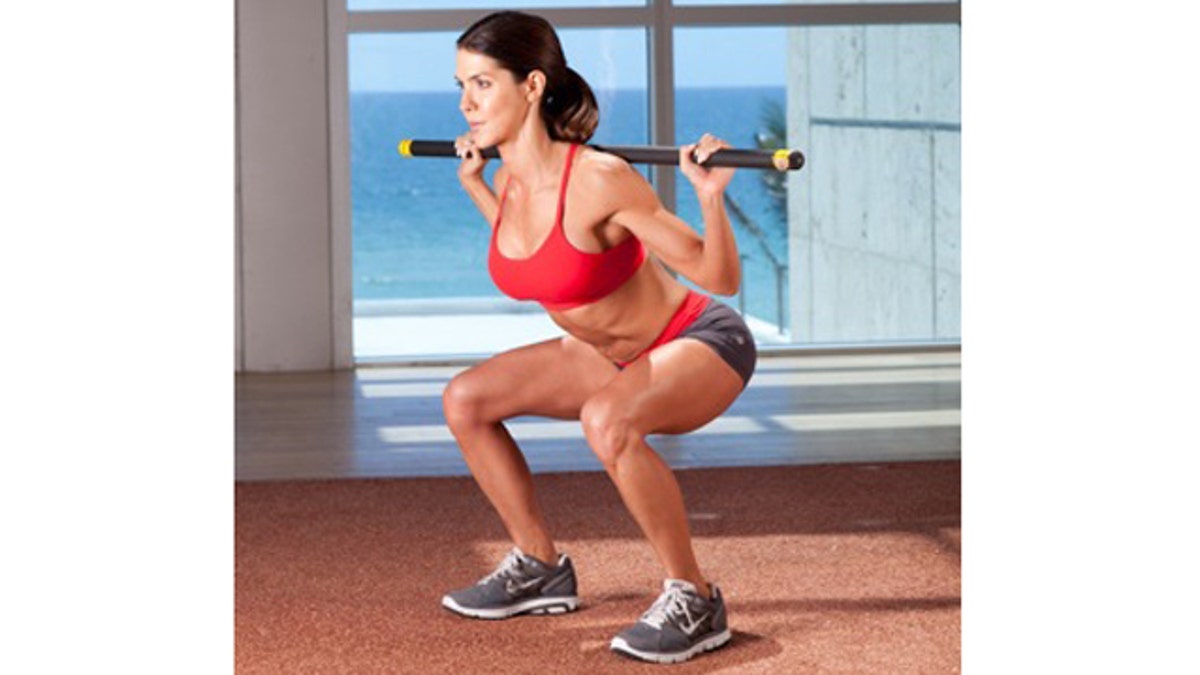
At 36, I recently found out that I have osteopeni: a condition in which bone mineral density is lower than normal, but not low enough to be considered osteoporosis. (Andrew Meade)
When I read in the Journal of Strength and Conditioning that power and agility-oriented moves such as depth jumps, jump squats and back squats increased bone density mass greater than walking and jogging, I thought the one disease that I’d never have to worry about was osteoporosis.
I thought this disease was supposed to impact us when were over 50, menopausal, and haven’t done anything in terms of exercise and proper nutrition.
At 36, I recently found out that I have osteopeni: a condition in which bone mineral density is lower than normal, but not low enough to be considered osteoporosis. It puts you at a higher risk to suffer from osteoporosis earlier in your life.
How could this possibly happen to me?
I run eight to 10 miles five times a week, do mixed martial arts, lift weights, play tennis and dance. I’ve been working out regularly since I was 17.
What Did I Do Wrong?
When I was a kid, I couldn’t get up from the table without my milk and have kept dairy and other sources of calcium in my diet. I eat salmon and get enough sun exposure to get the necessary vitamin D. In fact, my vitamin D and calcium blood test results came out well.
I’ve done a lot to help prevent the around 1 percent of bone density loss every year after 30, but estrogen turned out to be the main culprit of my spine bone loss. If you don’t have enough estrogen to help calcium to get transported to the bones, you simply lose more of the mineral and don’t replenish it at the same rate.
What Can You Do?
a) Exercise: Lift weights and jump! Muscles contract by pulling the tendons that are attached to the bones, which inevitable makes them stronger. Also, beware that high-impact exercise such as running will help you to prevent hip bone-loss mass, but the impact will not be sufficient to fully benefit the spine.
b) Supplements such as calcium and vitamin D, may be good. But it’s good to know that any doses over 500mg of calcium taken at once, the body won’t process it. Also, the more you can get your minerals and vitamins in wholesome natural food, the better. Isolated calcium intake won’t do the trick. When you combine this mineral with magnesium, vitamin K and D, among others, is when your body can be fully nourished.
c) Watch out on caffeine intake and very high fat protein diets. The jury is still out as to whether caffeine can negatively affect bone density and lean protein actually can do more good than bad, but too much of fat protein intake can create an acidosis stage.
And of course, check your hormones! Don’t think that just because you’re fit, you’re healthy.
Note: A great book to read and to get informed in a comprehensive and simple way is: Action Plan for Osteoporosis by Kerri Winters-Stone, Ph.D.
Marta Montenegro inspires people to live healthy lives by giving them the tools and strength to find one’s inner athlete through her personal website MartaMontenegro.com. She created SOBeFiT, a national fitness magazine for men and women, and the Montenegro Method DVD workout series – a program she designed for getting results in just 21 days by exercising 21 minutes a day . Marta is a strength and conditioning coach and serves as an adjunct professor of exercise physiology at Florida International University.
Follow us on twitter.com/foxnewslatino
Like us at facebook.com/foxnewslatino
